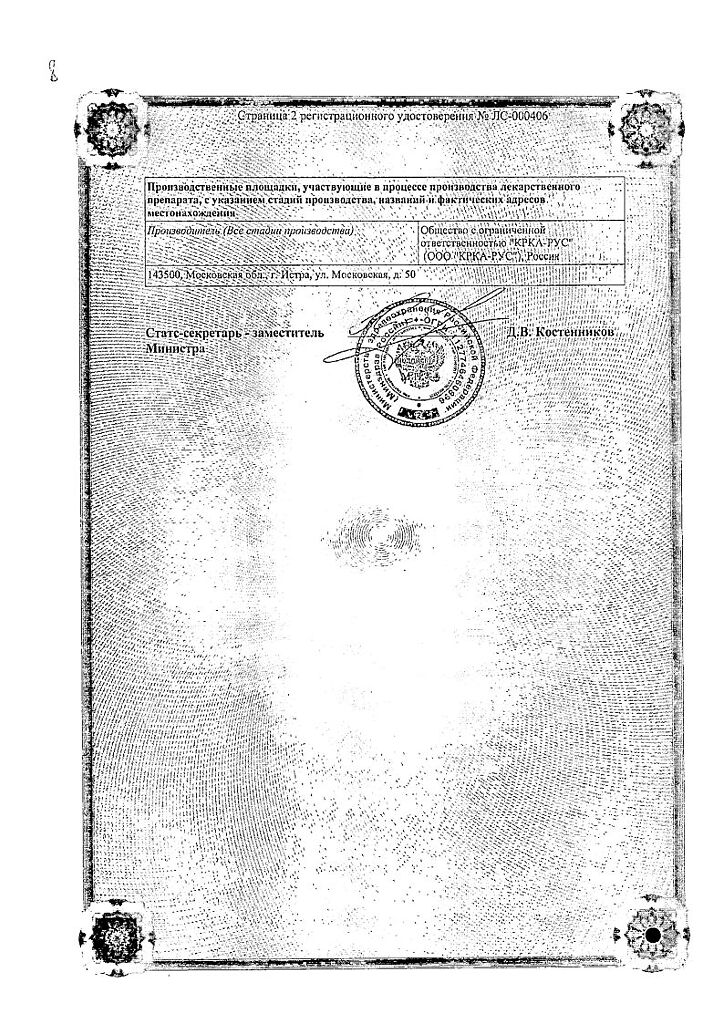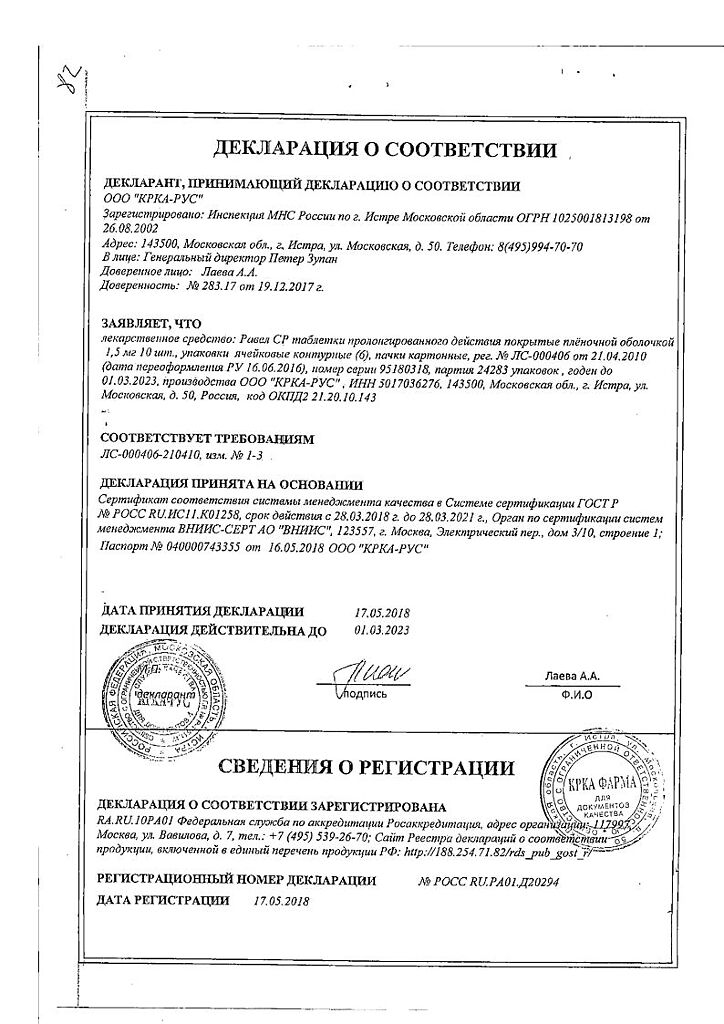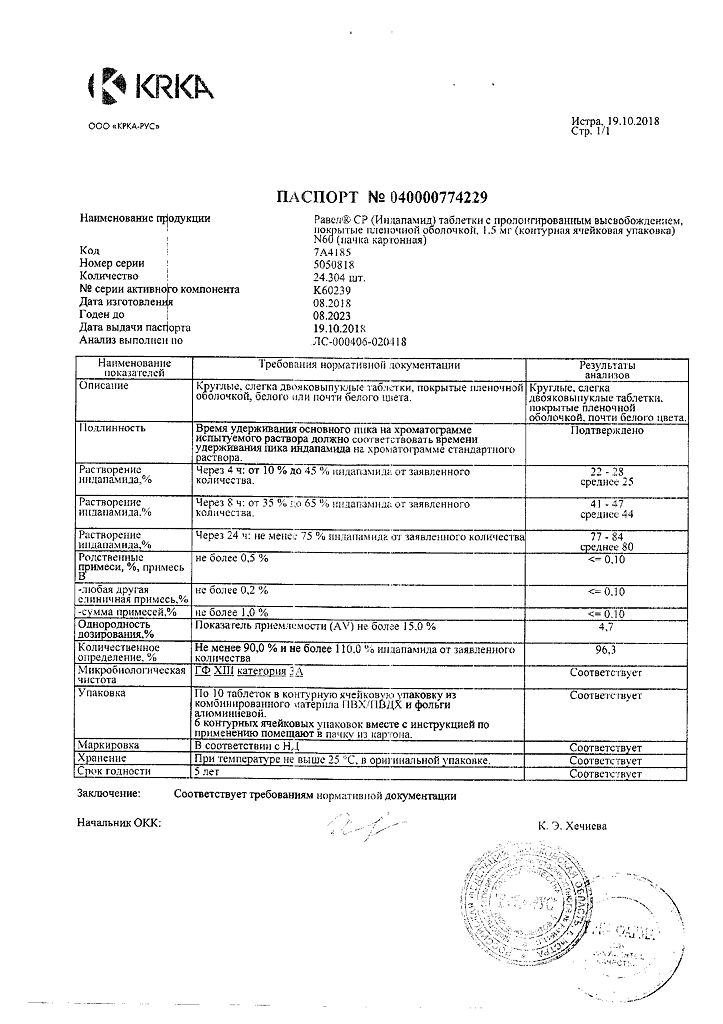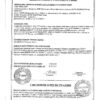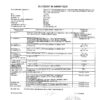No products in the cart.
Ravel SR, 1.5 mg 60 pcs
€1.00
Out of stock
(E-mail when Stock is available)
Description
Ravel SR is a diuretic. An antihypertensive drug. Indapamide belongs to the sulfonamide derivatives and has pharmacological properties similar to thiazide diuretics.
Indapamide impairs reabsorption of sodium ions in the cortical segment of the renal tubules, which increases excretion of sodium and chlorine ions with urine and leads to increased diuresis. To a lesser extent, the drug increases excretion of potassium and magnesium ions.
In addition to the diuretic action, indapamide has an effect on vascular tone which is manifested by reduction of arteriolar and total peripheral resistance.
Indapamide has antihypertensive effect in doses that do not have a pronounced diuretic effect. At high doses it has no effect on the degree of BP reduction, despite the increase in diuresis. Indapamide, like other thiazide diuretics, reduces left ventricular hypertrophy. In therapeutic doses has almost no effect on lipid and carbohydrate metabolism.
Indications
Indications
Arterial hypertension.
Active ingredient
Active ingredient
Composition
Composition
Prolonged, coated white or almost white, round, biconvex, contains Indapamide 15 mg.
Auxiliary substances:
Hydroxypropyl methylcellulose (hypromellose),
Cellactose,
Povidone,
Colloidal anhydrous silicon oxide,
Magnesium stearate,
Opadry Y-1-7000 (mixture of hypromellose, Macrogol 400 and titanium oxide),
Water.
How to take, the dosage
How to take, the dosage
The drug is taken orally, 1.5 mg (1 tablet) 1 time per day, preferably in the morning, with plenty of fluid.
Interaction
Interaction
Unrecommended combinations
Concomitant use with lithium preparations may increase plasma lithium ion concentrations due to reduced renal excretion, accompanied by signs of overdose (nephrotoxic effect), as well as with a salt-free diet (reduced renal excretion of lithium ions).
Combinations requiring special attention
1. Drugs that can cause pirouette-type heart rhythm disturbances: class IA antiarrhythmic agents (quinidine, hydroquinidine, disopyramide), class III antiarrhythmic agents (amiodarone, dofetilide, ibutilide, brettilia tozilate), sotalol, some neuroleptics: phenothiazines (chlorpromazine, cyamemazine, levomepromazine, thioridazine, trifluoperazine), benzamides (amisulpride, sulpiride, sultopride, thiapride), butyrophenones (droperidol, haloperidol), others (bepridil, cisapride, difemanil, erythromycin (IV), halofantrine, misolastin, pentamidine, sparfloxacin, moxifloxacin, vincamine (IV), astemisol.Concomitant use with any of these drugs, especially against the background of hypokalemia, increases the risk of ventricular arrhythmias of the type “pirouette”. Before starting combined therapy with Ravel® CP and the above drugs, plasma potassium should be monitored and corrected if necessary. Recommended: control of the patient’s clinical condition, as well as plasma electrolyte content and ECG. In patients with hypokalemia it is necessary to use drugs that do not provoke development of arrhythmia of “pirouette” type.
2. concomitant administration of NSAIDs (when used systemically), including selective COX-2 inhibitors, high doses of salicylic acid (3 g/day or more) may: decrease antihypertensive effect of indapamide, development of acute renal failure in dehydrated patients (due to decreased glomerular filtration rate). At the beginning of therapy with indapamide it is necessary to restore water-electrolyte balance and monitor renal function.
3. ACE inhibitors in patients with hyponatremia (especially in patients with renal artery stenosis) increase the risk of arterial hypotension and/or acute renal failure. Patients with arterial hypertension and possibly with hyponatremia due to diuretics should:
– discontinue the drug 3 days before starting therapy with ACE inhibitors and switch to therapy with potassium-saving diuretics;
– or start therapy with ACE inhibitors at low doses, with subsequent gradual increase of the dose if necessary. In the first week of therapy with ACE inhibitors, monitoring of plasma creatinine concentration is recommended.
4. other drugs that may cause hypokalemia:
– amphotericin B (IV);
– gluco- and mineralocorticosteroids (if administered systemically) (see also information under “Combination therapy”).
– tetracosactide (see also information under “Drug combinations that require attention”);
– intestinal motility-enhancing laxatives.
The risk of hypokalemia (additive effect) increases when concomitantly taking the above drugs with indapamide.
Potassium ion plasma levels should be monitored and adjusted if necessary.
5. concomitant therapy with baclofen increases the antihypertensive effect of indapamide.
6. Cardiac glycosides: hypokalemia increases the toxic effects of cardiac glycosides (glycoside intoxication). When concomitant use of indapamide and cardiac glycosides the content of plasma potassium ions and ECG parameters should be monitored and, if necessary, the therapy should be adjusted.
Combinations of drugs requiring attention
1. Simultaneous use with potassium-saving diuretics (amiloride, spironolactone, triamterene) is reasonable in some patients, but the possibility of hypokalemia is not excluded. Against the background of diabetes mellitus or renal insufficiency, hyperkalemia may develop. The content of potassium ions in plasma and indices should be monitored and, if necessary, the therapy should be adjusted.
2. Metformin increases the risk of lactic acidosis, as renal failure may develop with diuretics, especially loop diuretics. Metformin should not be taken when plasma creatinine concentration is more than 15 mg/l (135 µmol/L) in men and 12 mg/l (110 µmol/L) in women.
3. Simultaneous use of high doses of iodine-containing contrast agents against a background of hypovolemia and administration of diuretics increases the risk of acute renal failure. It is recommended to restore water-electrolyte balance of blood before using the drugs.
4. tricyclic antidepressants (imipramine-like) and neuroleptics increase the hypotensive effect and the risk of orthostatic hypotension (additive effect).
5. calcium salt preparations increase the risk of hypercalcemia due to reduced excretion of calcium ions by the kidneys.
6. cyclosporine, tacrolimus – risk of increased plasma creatinine concentration without changes in circulating cyclosporine concentration.
7. GCS, tetracosactide (when used systemically) reduce the hypotensive effect (retention of sodium ions and fluid).
Special Instructions
Special Instructions
Hepatic disorders
In patients with hepatic insufficiency, administration of thiazide-like diuretics may lead to hepatic encephalopathy, especially if the water-electrolyte balance is impaired. If this occurs, diuretics should be discontinued.
Photosensitivity
When using thiazide-like diuretics there have been cases of photosensitivity reactions. If these reactions occur, the drug should be discontinued. During the treatment with Ravel® CP it is necessary to protect exposed parts of the body from sunlight and artificial UV radiation.
Water-electrolyte balance
Sodium ion content in plasma: all diuretics may cause hyponatremia. The plasma sodium ion content should be measured before starting the treatment with Ravel® CP and then regularly during the treatment period. It is important to monitor regularly the content of sodium ions in blood plasma, because initially hyponatremia may occur asymptomatically. The most careful control of the content of sodium ions is indicated in elderly patients and patients with liver cirrhosis;
Physical potassium ions in plasma: the greatest risk of treatment with thiazide-like diuretics is hypokalemia.
Particular attention for the prevention of hypokalemia (less than 3.4 mmol/l) should be given in the following cases: weakened patients and/or those receiving other therapy (antiarrhythmic drugs and agents that may prolong the QT interval on ECG), elderly patients; patients with cirrhosis, peripheral edema and ascites; with CHD and chronic heart failure. Hypokalemia in these patients increases toxic effects of cardiac glycosides and increases the risk of arrhythmias.
Patients with prolonged QT interval on ECG are also at increased risk. Hypokalemia is a predisposing factor for severe arrhythmias, especially pirouette arrhythmias, which can be fatal.
In all the cases described, plasma potassium should be monitored regularly. The first plasma potassium determination should be performed during the first week of therapy with Ravel® SR. If hypokalemia is detected, appropriate therapy should be given.
– plasma calcium ion content: thiazide and thiazide diuretics may decrease renal excretion of calcium ions, resulting in mild and/or temporary hypercalcemia. Severe hypercalcemia during administration of Ravel® CP may be due to previously undiagnosed hyperparathyroidism. Diuretics should be discontinued prior to parathyroid function testing;
– plasma glucose concentrations: In patients with diabetes mellitus, especially in the presence of hypokalemia, monitoring of plasma glucose concentration is necessary;
– Uric acid: in patients with hyperuricemia may increase the frequency of attacks or exacerbation of the course of gout.
Renal function and diuretics
Tiazide and thiazide-like diuretics are only fully effective in patients with normal or mildly reduced (adult plasma creatinine less than 25 mg/L or 220 μmol/L) renal function.
Developed hypovolemia may lead to acute renal failure (decreased glomerular filtration rate), which may be accompanied by increased plasma concentrations of urea and creatinine. With normal renal function, transient functional renal failure usually passes without consequences. With existing renal failure the patient’s condition may worsen.
Patients in the elderly
The regular monitoring of creatinine and plasma potassium concentrations is recommended according to patient age, body weight and sex. Ravel® CP can be indicated in elderly patients with preserved or mildly impaired renal function (creatinine Cl above 30 mL/min).
Athletes
Indapamide may give a positive result in a doping control.
The effect on the ability to drive motor vehicles and other complex mechanical devices. Use of indapamide does not lead to impairment of psychomotor reactions. However, some patients may have various individual reactions in response to BP decrease, especially at the beginning of therapy or when adding other hypotensive agents to the current therapy. In this regard, at the beginning of treatment with Ravel® CP it is not recommended to drive motor transport or other complex mechanisms requiring increased attention.
Contraindications
Contraindications
Precaution about use in diabetes, renal and/or hepatic impairment, electrolyte-water balance disorders, hyperparathyroidism, ECG QT interval prolongation, hyperuricemia.
Side effects
Side effects
Classification of the incidence of side effects (WHO): very common (â¥10%), common (â¥1% – < 10%), infrequent (â¥0.1% – < 1%), rare (â¥0.01% – < 0.1%), very rare (â¥0.001% – < 0.01%, including individual reports).
Cardiovascular system disorders: very rare – decreased BP, arrhythmia, orthostatic hypotension, palpitations, ECG changes characteristic of hypokalemia, hemorrhagic vasculitis.
Hematopoietic organs: very rarely – thrombocytopenia, leukopenia, agranulocytosis, aplastic anemia, hemolytic anemia, aplasia of bone marrow.
CNS and peripheral nervous system disorders: rarely – dizziness, headache, paresthesia, hyperexcitability, asthenia, somnolence, vertigo, insomnia, depression, increased fatigue, muscle spasms in extremities, tension, irritability, anxiety.
The digestive system: infrequent – vomiting; rare – nausea, constipation, dry mouth; very rare – pancreatitis, anorexia, abdominal pain, diarrhea. In patients with hepatic insufficiency, hepatic encephalopathy may develop.
Urogenital system disorders: very rarely – renal failure, nycturia, infections, polyuria.
Respiratory system disorders: cough, pharyngitis, sinusitis, rhinitis.
Allergic reactions: common – maculopapular rash; infrequent – purpura, very rare – angioedema and/or urticaria, toxic epidermal necrolysis, Stevens-Johnson syndrome, skin itching.
Others: individual reports – exacerbation of SLE, photosensitivity reactions.
Laboratory data: in clinical trials hypokalemia (potassium content in plasma less than 3.4 mmol/l) was observed in 10% of patients and 3.2 mmol/l – in 4% of patients after 4-6 weeks of therapy. After 12 weeks of therapy, plasma potassium content decreased, on average, by 0.23 mmol/l. Very rarely – hypercalcemia, unspecified frequency: decrease of potassium content and development of hypokalemia, especially significant in risk group patients; hyponatremia accompanied with hypovolemia and orthostatic hypotension. Simultaneous loss of chlorine ions may cause compensatory metabolic alkalosis, but the incidence and severity of metabolic alkalosis is insignificant; hyperuricemia and hyperglycemia (unspecified frequency), increased concentration of blood urea nitrogen, hypercreatininemia.
Overdose
Overdose
Symptoms: water-electrolyte disorders (hyponatremia, hypokalemia) manifested as nausea, vomiting, decreased blood pressure, seizures, dizziness, drowsiness, lethargy, polyuria or oliguria, up to anuria (due to hypovolemia).
Treatment: gastric lavage, administration of activated charcoal, correction of water-electrolyte balance, symptomatic therapy; there is no specific antidote.
Pregnancy use
Pregnancy use
Prescription of indapamide during pregnancy is not recommended. Use of the drug may cause fetoplacental ischemia with the risk of fetal growth retardation.
The drug is not recommended during lactation (breast-feeding) because indapamide is excreted with breast milk.
Similarities
Similarities
Additional information
| Shelf life | 5 years |
|---|---|
| Conditions of storage | At a temperature not exceeding 25 °C |
| Manufacturer | KRKA dd Novo mesto, Slovenia |
| Medication form | slow-release tablets |
| Brand | KRKA dd Novo mesto |
Related products
Buy Ravel SR, 1.5 mg 60 pcs with delivery to USA, UK, Europe and over 120 other countries.


